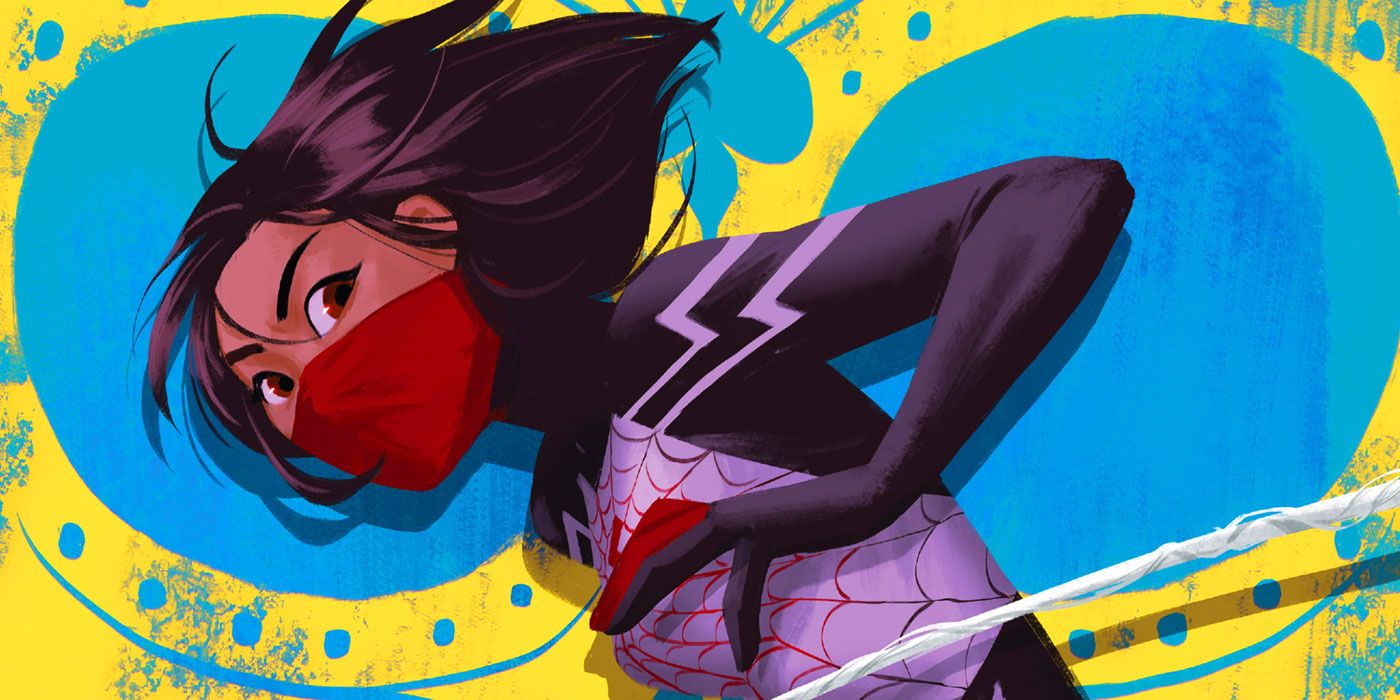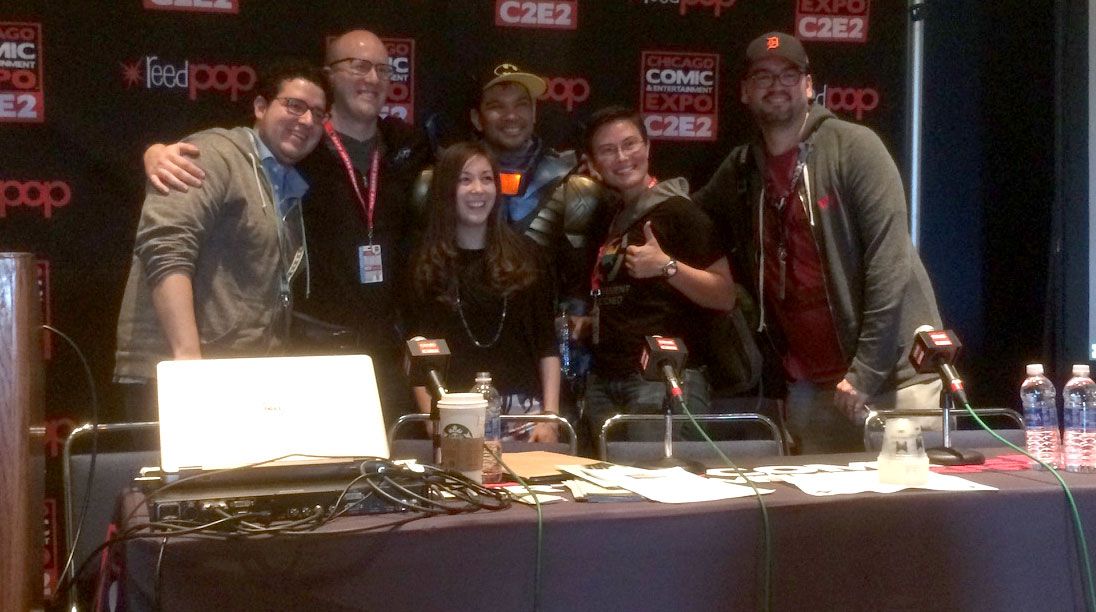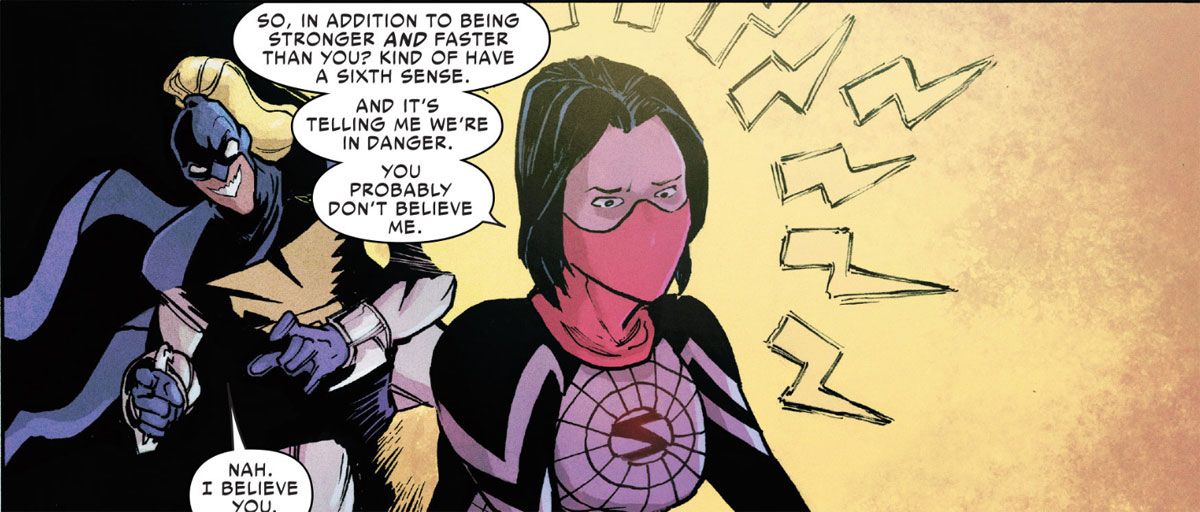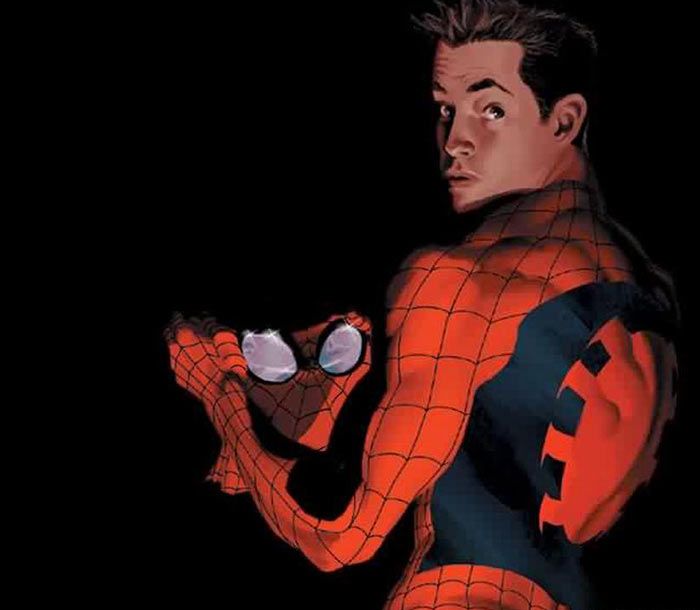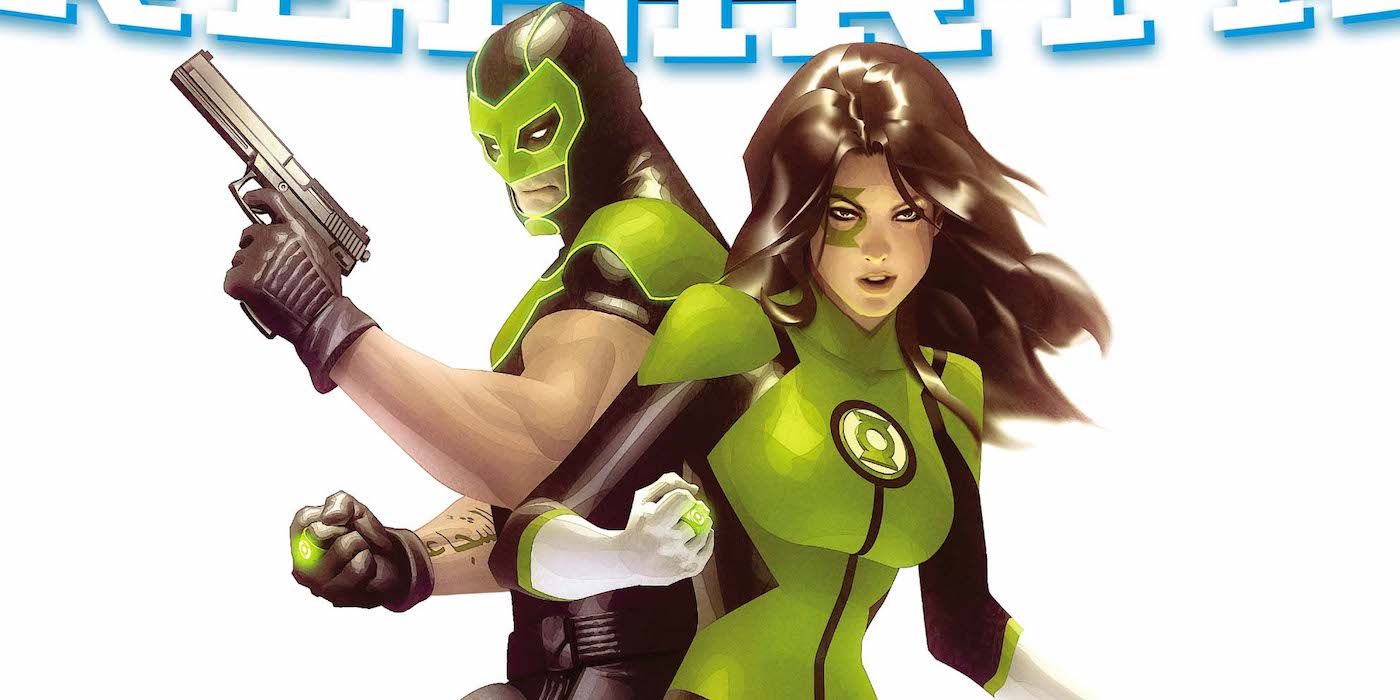Many superheroes owe their entire careers to traumatic events, but what would happen if you took that trauma away? A C2E2 panel, "The Value of Mental Illness in Comics: Finding Resilience in Pain" asked this, as well as questions about how mental health is portrayed in comics and how comics can be used in the treatment of mental illness.
The panel, moderated by Dr. Patrick O'Connor of the Chicago School of Professional Psychology, featured comic creators Robbie Thompson ("Silk" and "Spidey") and Tana Ford ("Silk" and her creator-owned "Duck"), as well as mental health professionals Josué Cardona, Elizabeth Smith and Joseph Serrano, who arrived wearing full Azrael Batman cosplay.
After introducing the panelists, O'Connor asked them to name some of their favorite examples of comics characters who deal with mental health issues. Thompson jumped in, saying one of his favorite examples was "a little-known character named Peter Parker."
Thompson loves how Peter didn't follow the usual comics storyline, where a normal person gets powers and decides to become a hero; instead, Peter first decided "he was gonna make cash money." It was only after the traumatic loss of Uncle Ben that Peter decided to become a hero. "I like how there's that step before the step," unlike with Bruce Wayne.
Cardona noted that Spider-Man's spider-sense is a warning sign, just like anxiety. It's shown super sharp on the page, which is how many who deal with anxiety feel it. Thompson agreed, noting that on "Silk" they referred to it as Cindy Moon's "Silk Sense." According to Thompson, it was the body's way of sending the message "it's time to take a TO."
O'Connor commented that while depression is a feeling about something that has already happened, anxiety is a feeling about something that hasn't happened yet, and that sometimes elements of mental illness can be helpful.
Ford jumped off this point, noting that Silk's ten-year isolation in a bunker is a source of pain, but also represented a place where she felt safe, even if it was a false sense of safety. One can find power and value in the things that scare you, Ford said.
Smith noted this was a great example of what they call post-traumatic growth. According to Smith, we focus so much on how trauma negatively affects people, but trauma can also push people to grow in a variety of ways. We often see this in comics, where difficult experiences give characters the strength to grow.
One of the things Smith loved about "Silk" was how it showed a very different sort of trauma than we often see with female characters, which is often centered on rape or death, especially to further the story of a central male character like Punisher.
Ford then jumped in, saying "One of the things I’m intensely proud of is that inside Silk we have two side characters who are gay -- an interracial lesbian couple -- and they end up getting married and neither of them is murdered." Ford said that in "Silk," they were very mindful of how she formed relationships with other people, because it was Cindy's human relationships that kept her from turning to the dark side.
Thompson then talked about the importance of making Cindy into a real character, and how editor Nick Lowe had emphasized to him what she did as Cindy was more important than what she did as Silk, because "if we cannot connect with Cindy, we cannot connect with Silk."
Serrano then talked about his doctoral research, in which he has interviewed long-time readers about how comics have affected them. He mentioned the story of a veteran who was able to channel his love Nightcrawler to help get closure after a close friend was killed. Serrano said that we are able to look at these characters we love and ask "what would Batman do" or "what would Spider-Man do?"
O'Connor turned the discussion to self-exploration, giving the example of Nightwing getting kicked out of the Batcave and reexploring his circus roots to find out who he really was, "trying to connect to his past to find his future."
Ford then note that comics are inherently about and for people who are othered. "To get meta for a second, one of the brilliant things about comics is it deals with someone who is an other, and you are reading it as someone who feels like an other. You’re reading about people who create communities for themselves who are others. There’s a circularity to the act of reading comics, to experiencing the world of comics."
O'Connor then asked what would happen if we removed trauma and mental illness from comics. What would happen if Uncle Ben had lived, or Bruce Wayne's parents not been killed? Or what if Batman went to therapy?
"That would be an awesome Elseworlds, where Batman goes and becomes a game designer to find his bliss," Thompson said. "But, as a writer, part of the job is to traumatize the characters." He then said that "Supernatural" fans often ask him why he is so mean to Sam and Dean. "I'm a terrible person, I guess."
Serrano said he thought Thompson's story sounded interesting, "but maybe I don't want to watch Bruce Wayne become a radiologist."
Ford said she wasn't sure that removing the original trauma would make much difference. Even if you remove the original trauma, you can’t remove all trauma. It will just be different trauma, she said.
"So it's like 'Final Destination,'" said Thompson.
Batman could have been in a different situation and been inspired in a different way, Cardona said. But, Ford replied, this was leading too close to an idea of manifest destiny. Instead, she talked about how contemporary comics allow exploration into what it means to be a hero from multiple points of view. "I like how in our modern comics landscape we can ask these big questions and philosophically dive in to these unanswerable questions," she said.
Serrano noted that in his research he asked what it meant to be a hero, and people mentioned everything from family members to the person who saved their aunt from a heart attack.
O'Connor mentioned Mark Waid's "Irredeemable" and the idea that one of the unspoken powers most heroes have is the ability to cope with being super. What kind of emotional strength is required to overcome being too late to save the day or put up with people yelling at you for not doing enough, he asked.
"I think about Peter Parker," said Thompson. He said that when he first started writing "Spidey," editor Nick Lowe reminded him of an informal rule Stan Lee and Steve Ditko had, where if Spidey won, Peter lost; if Peter won, Spidey lost. Peter might have a good day, but Spider-Man would be attacked by J. Jonah Jameson. He had negative publicity, but it was just something he had to deal with.
Serrano, who at this point had difficulty opening his bottle of water because of his Azrael Batman gloves, noted how heroes often have trouble balancing their obligations, and that comics can help people accept that they cannot be everywhere or do everything at once.
Ford said that one of their goals with "Silk" was to break down the stigma of going to therapy. Cindy was a woman of color, and it was especially important to talk to someone else about her problems and break down that stigma around mental health.
"We will never get a better review than the comments from people who said they went to see a therapist after reading Silk," said Thompson.
Serrano thanked Thompson and Ford for putting a therapist in "Silk," but noted that many of the things people go through are not to the level of mental illness, and do not have a formal diagnosis. One of his favorite characters is The Doctor from "Doctor Who," and he sees every symptom of ADHD in him. "'Snotgirl' is a comic about a girl with allergies, and that’s how I feel!" Serrano said.
An audience member asked about Jessica Cruz from "Green Lanterns." Thompson said that Sam Humphries was doing fantastic things with that book, and highly recommended it for "Silk" fans. Cardona replied that if there is a character that really speaks to you, take it with you to your therapist to show how you feel.
"I always use the Fantastic Four," said Thompson. "Today’s a Ben Grimm day and I feel like a pile of rocks. Or sometimes it’s a Sue Storm day and everything is awesome."
Another audience member noted that she felt more connection to villains, who often had more complexity next to the tidiness of the mental health of heroes. O'Connor mentioned working with kids who also felt more affinity with villain comics, in part because their lives were messier and harder to control.
The final question came from a volunteer moderator for an online mental health support community, who said he struggled with getting others to open up when he has his own issues opening up. Smith said that one of the most important things you could do is just provide a safe space and letting people come to you when you're ready. One of the biggest problems is being forced to deal with things before one is ready, she said. Serrano agreed, saying that forcing someone to do something takes away their power, making it more difficult to move forward.
Cardona said it was important to be open about what you feel. The burnout rate for therapists is very high, and many do not last five years. Smith then noted many therapists have their own therapists.
"Taking care of yourself is very important, too."

